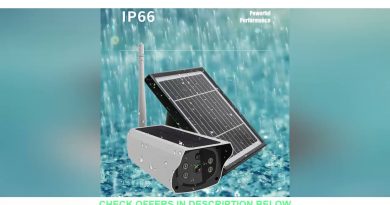How to setup Ip Address Bangla Tutorial আইপি সেট আপ করুন সহজে নিখূতভাবে Setup ip bd Tutorial 2020
IP Configuration: Configure IP Address and Network Settings
Facebook group- https://www.facebook.com/groups/323367832002334/?epa=SEARCH_BOX
Support Site- Whoer.net
Support Site- check2ip
#proxy
#Socks
#Specktrum
Companies with advanced network configurations can configure multiple IP addresses on the appliance’s ethernet ports. Using multiple ports can enhance security or enable connections over non-standard networks. For example, if employees are restricted from accessing the internet but need to provide off-network support, using one port for your internal private network and another for the public internet allows users worldwide to access systems without breaching your network security policies.NIC teaming combines your system’s physical network interface controllers into a single logical interface. NIC teaming operates in “Active-Backup” mode. One of the NICs is used to carry all network traffic. If the link on that NIC is lost for any reason, the other NIC becomes active. Before activating NIC teaming, please ensure that both NICs are connected to the same network segment (subnet) and that you have IP addresses configured on only one of the existing NICs.
Although multiple IP addresses can be assigned to each NIC, do not configure either NIC such that it has an IP address that is in the same subnet as an IP address on the other NIC. In this scenario, packet loss occurs with packets originating from the IP on the NIC that does not have the default gateway. Consider the following example configuration:
regardless of which NIC received traffic. Switches configured with dynamic ARP send packets randomly to either eth When eth0 receives these packets from the switch destined for eth1, eth0 drops the packets. Some switches are configured with static ARP. These switches drop all packets received from eth1 since this NIC does not have the default gateway and is not present in the static ARP table of the gateway. If you wish to configure redundant NICs on the same subnet, us e NIC teaming.By default, Dynamic Host Configuration Protocol DHCP is enabled for your appliance. DHCP is a network protocol that uses a DHCP server to control the distribution of network parameters, such as IP addresses, allowing systems to automatically request these parameters. This reduces the need to manually configure settings. In this case, when checked, an IP address is obtained from the DHCP server and is removed from the pool of available IP addresses.Assign a default gateway, selecting which ethernet port to use. Enter an IP address for one or more DNS servers. If DHCP is enabled, the DHCP lease provides you with a default gateway as well as a listing of DNS servers in order of preference. Any statically configured DNS servers listed in the Custom DNS Servers field are attempted to be reached first, followed by DNS servers received from DHCP. In the event that these local DNS servers are unavailable, the Fallback to OpenDNS Servers option enables the Secure Remote Access Appliance to use publicly available DNS servers from OpenDNS. For more information about Open DNS, visit.Allow your appliance to respond to pings if you wish to be able to test if the host is functioning. Set the host name or IP address for a Network Time Protocol NTP server with which you wish your Secure Remote Access Appliance to synchronize.Two settings are available in the Port Number Settings area: Server Listen Ports and Default URL Ports. When configuring these, keep in mind that connections made to valid ports may be rejected by network restrictions set in appliance Security Appliance Administration and in login Management Security. The opposite is also true: connections made to invalid ports are rejected even if such connections satisfy network restrictions.The Server Listen Ports section allows you to configure ports for the appliance to listen on. You may specify up to 15 comma-separated ports for HTTP and 15 comma-separated ports for HTTPS. Each port may appear only once in any field, and it may appear in only one field, not both. The appliance responds to HTTP connections made to any of the ports listed in the HTTP field, and the appliance responds to HTTPS connections made to any of the ports in the HTTPS field.Default URL Ports are used when generating URLs that point back to the appliance, such as session keys generated from the representative console. When the default ports are blocked on the network or can be expected to fail for any other reason, you can change the default URL ports to have generated URLs spawn with the ports that you specify. Whatever ports you enter should also be listed in the Server Listen Ports; otherwise, the default ports are not connected. For example, if you enter 8080 in the Default URL Port field, make sure 8080 is also in the HTTP or HTTPS Listen Port field. Unlike the listen port fields, you cannot enter more than one port in either of the URL port fields. You cannot enter the same port in both fields.
ip address



